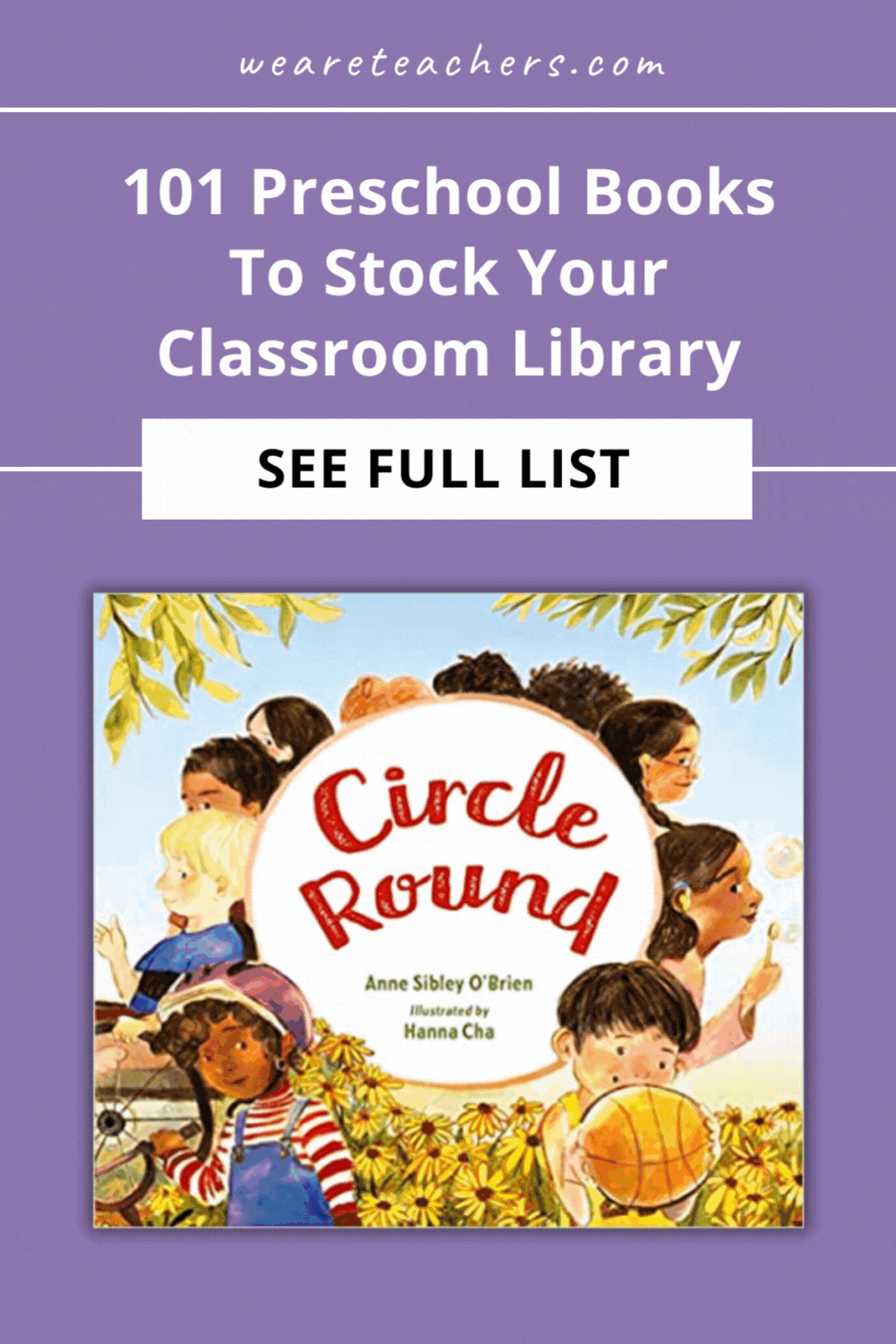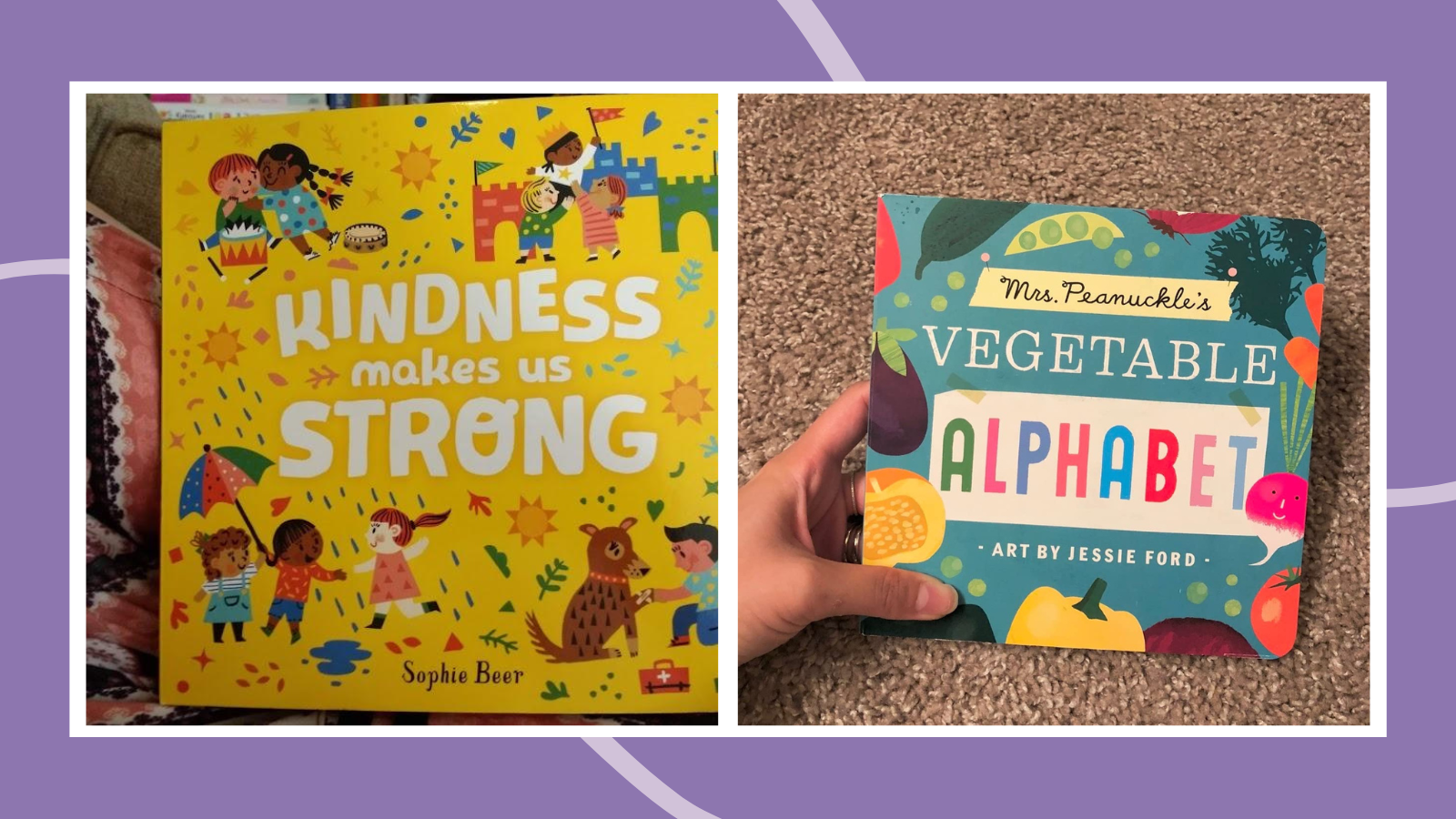There’s nothing better in preschool than cozying up on the rug to share books together. Preschoolers represent a range of ages, developmental levels, and interests. With that in mind, we’ve rounded up a mega-list of mostly recent preschool books to stock your classroom library. Check them out to support your thematic units or just make any story time better!
Psst: Don’t think we forgot about all our old favorite preschool books—many are included on this list of Books That Will Make You Nostalgic for Preschool.
Preschool Books About Friendship and Kindness
Learning to be a kind friend is at the heart of preschool! These books give kids the language and examples they need.
1. Luli and the Language of Tea by Andrea Wang
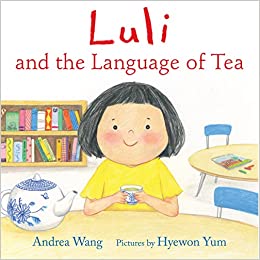
There are lots of kids in the childcare room while their adults attend English as a Second Language classes, but none of them speak to each other. That is until Luli makes a plan to bring them together to share tea and cookies. This is an adorable, heartwarming story about connecting with others that could definitely inspire many preschool tea parties!
Buy it: Luli and the Language of Tea on Amazon
2. Circle Round by Anne Sibley O’Brien
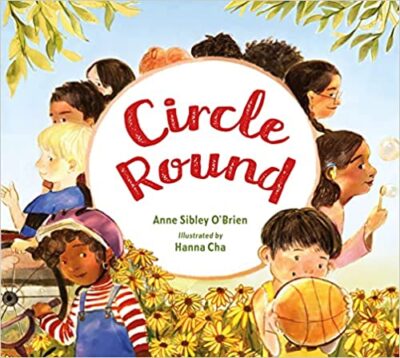
There’s so much to talk about in the pictures of this sweet counting book. At the park, more circles (a ball, bike wheels, Hula-Hoops) mean more chances to play with friends!
Buy it: Circle Round on Amazon
3. Kindness Makes Us Strong by Sophie Beer
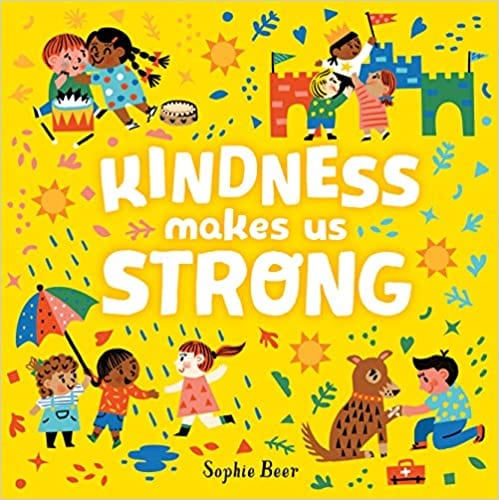
Kindness is a universal theme in preschool, and this title brims with optimism and age-appropriate examples. Share it with kids and then celebrate their own kind ideas and actions.
Buy it: Kindness Makes Us Strong on Amazon
4. What Happened to You? by James Catchpole
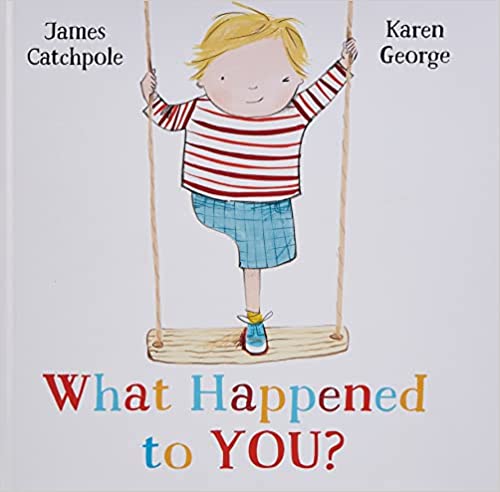
This is one of our new favorite preschool books for building empathy around differences and disabilities. Joe just wants to play pirates at the playground, but the other kids can’t contain their questions about why he has only one leg. It’s a great #OwnVoices story for opening discussions about balancing curiosity with respect for privacy.
Buy it: What Happened to You? on Amazon
5. Bird House by Blanca Gómez
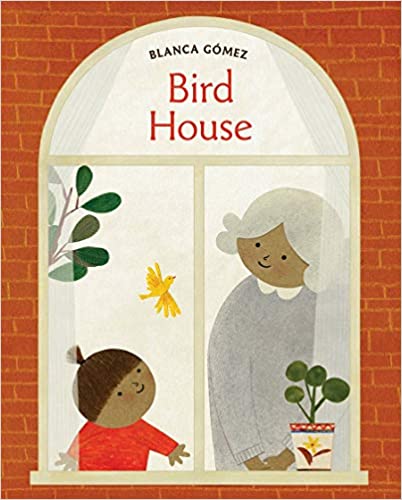
A young girl finds an injured bird while on a walk with her abuela. They nurse it back to health and release it—and receive a surprise visitor the following spring. If you’re looking to add to your collection of gentle preschool books for reading aloud again and again, this is a good choice. It’s also available in Spanish.
Buy it: Bird House on Amazon
6. The Wish Tree by Kyo Maclear
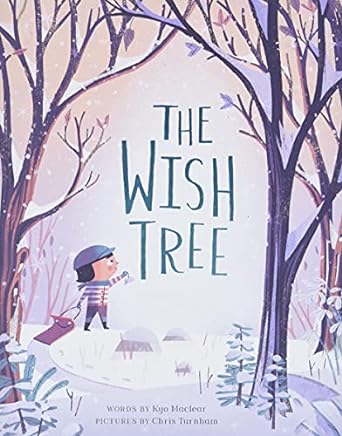
The sweetest winter friendship story. Charles dreams of finding a “wish tree” and sets off into the woods with his trusty sled, Boggan, to find one. Along the way he selflessly helps many animals carry food and supplies they need for winter.
Buy it: The Wish Tree on Amazon
7. Hooray for Hat! by Brian Won
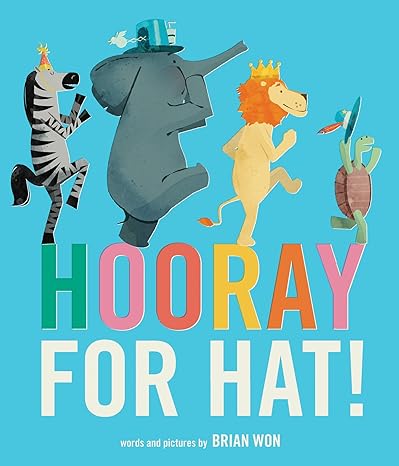
This is a go-to for helping younger preschoolers understand how to be a friend to someone feeling grumpy. A group of animal friends share a silly hat gift to cheer each other up. Lots of fun to read aloud again and again (and again!) Check out the other Hooray For! books too.
Buy it: Hooray for Hat! on Amazon
8. The Love Letter by Anika Aldamuy Denise
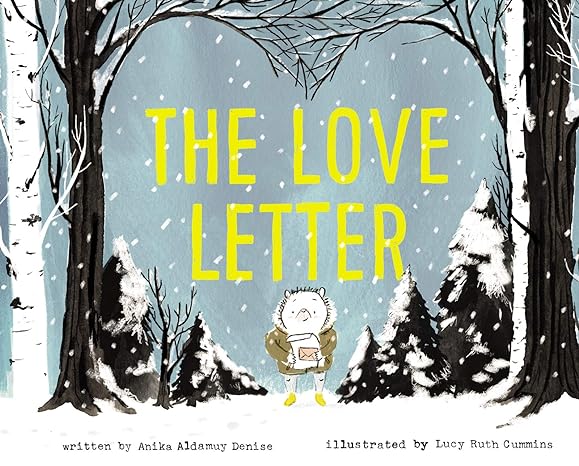
When a dropped love note makes its way around a group of forest friends, everyone has different reactions and ideas about who may have sent it. For all of them, though, the idea of the note makes them feel loved. Preschool listeners love having the inside scoop on the story as the animals try to figure out the mystery.
Buy it: The Love Letter on Amazon
9. Valentine’s Guest House by Sam Sharland
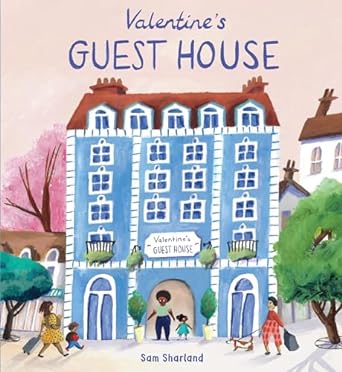
Valentine and her daughter Elsie run a friendly guest house. When Emmet the tiger arrives in search of a room, the other guests get nervous. Valentine and Elsie’s calm, welcoming reaction to an unexpected guest turns into a lesson for the whole community about acceptance.
Buy it: Valentine’s Guest House on Amazon
10. Something’s Wrong! A Bear, a Hare, and Some Underwear by Jory John
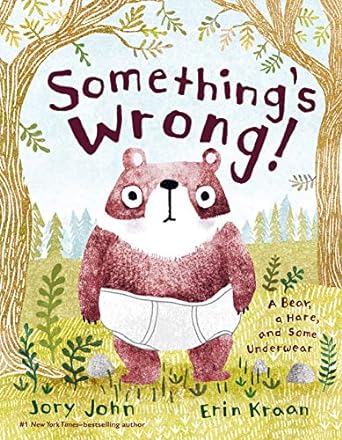
Bear has an uneasy feeling that something’s wrong, but he can’t figure out what. Cue the endless preschool giggles as he parades around the forest in his underwear. Hare is an exemplary friend and helps it all turn out OK.
Buy it: Something’s Wrong! A Bear, a Hare, and Some Underwear on Amazon
11. Nothing’s Wrong! A Hare, a Bear, and Some Pie To Share by Jory John
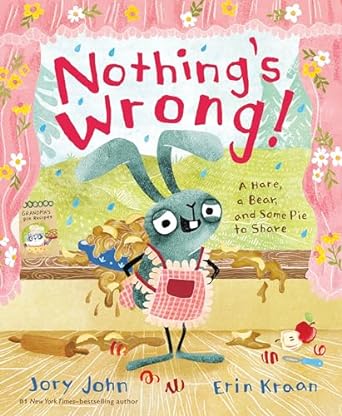
Hare plans to surprise his friend Bear with a pie for their picnic, but it ends up being ruined. Hare is completely bummed, but when he finally opens up to Bear, the two friends work together to make a backup plan. Add this to your preschool books about how friends can problem-solve together!
Buy it: Nothing’s Wrong: A Hare, a Bear, and Some Pie to Share on Amazon
All About Me Preschool Books
Read these books to help kids talk about (and love!) themselves and appreciate the beautiful diversity of those around them.
12. My Hair Is Like the Sun by St. Clair Derick-Jules
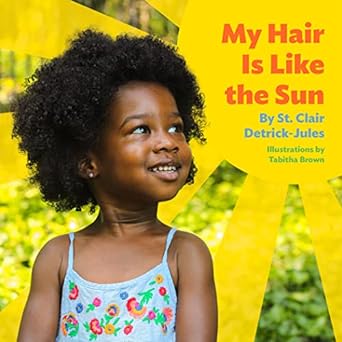
This gorgeous board book joyfully compares Black hair to the ocean, a cloud, a river, and more. We love it for helping all kids describe and celebrate their hair.
Buy it: My Hair Is Like the Sun on Amazon
13. Bodies Are Cool by Tyler Feder
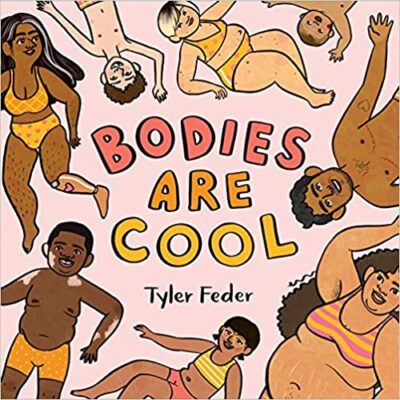
This title belongs in every single classroom collection of preschool books. It’s hands-down the most positive and inclusive book we’ve ever seen about physical appearance. No matter your shape, size, hair, skin color and markings, and features, bodies are amazingly cool.
Buy it: Bodies Are Cool on Amazon
14. I’m Not Small by Nina Crews
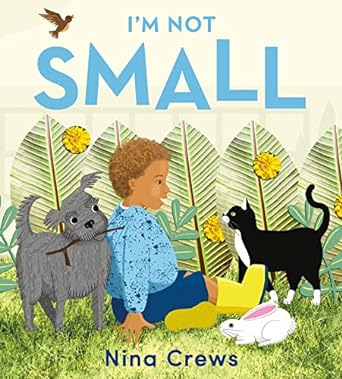
A young boy wants to play outside and his parents tell him, “Go ahead. You’re a big kid now.” A relatable story about how feeling both big and small can feel good.
Buy it: I’m Not Small on Amazon
15. Tangle-Knot by Loretta Ellsworth
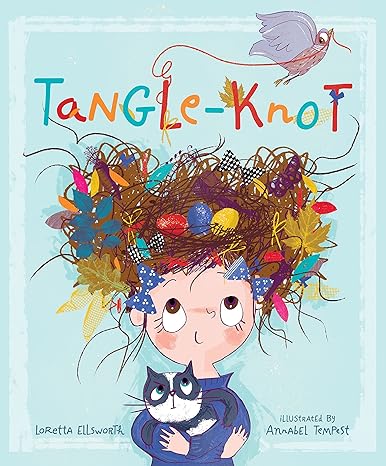
Add this to your preschool books for kids who like to do things their own way. Fia loves her tangled hair and refuses to brush it, despite her mother’s pleas—and the fact that its home to an actual bird’s nest! A relatable story about how good it feels to be your own special self.
Buy it: Tangle-Knot on Amazon
16. I Can Be … Me! by Lesléa Newman
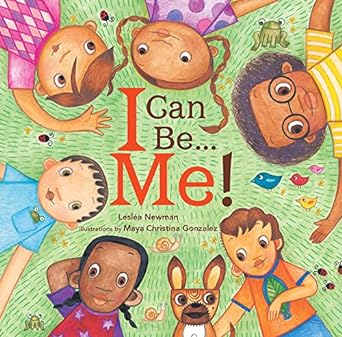
This joyful, affirming read-aloud will encourage your preschool students to do, wear, dream, and be what makes them happy!
Buy it: I Can Be … Me! on Amazon
17. Happy in Our Skin by Fran Manushkin
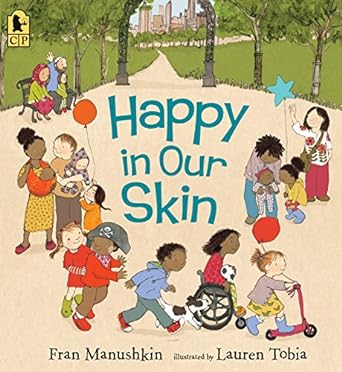
This happy title celebrates skin from babyhood to toddlerhood and beyond. We appreciate developmentally appropriate preschool books that invite kids to talk about skin color.
Buy it: Happy in Our Skin on Amazon
18. Let’s Make Faces by Hanoch Piven
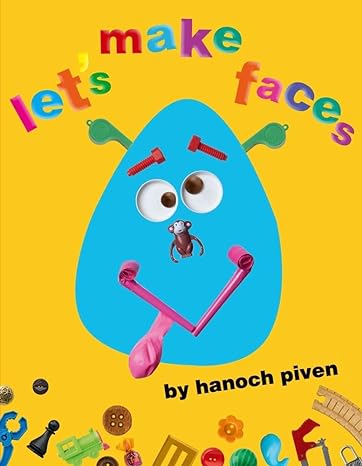
Inviting preschool kids to make self-portraits or family portraits with loose parts is on our list of must-do projects every year. Get them thinking about how to celebrate and creatively represent all their features with this fun collage book.
Buy it: Let’s Make Faces on Amazon
19. A Dress With Pockets by Lily Murray
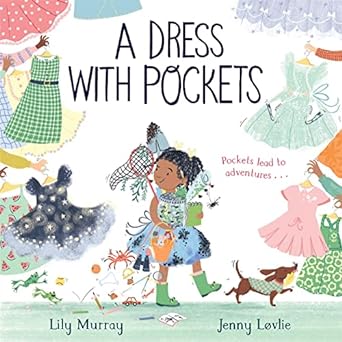
Lily and her aunt go on a shopping expedition, but none of the available dresses feel right. Lily is determined to find one with pockets! Preschoolers who have strong ideas about what clothing they like will easily connect to Lily’s experiences.
Buy it: A Dress With Pockets on Amazon
Preschool Books About Emotions
Social-emotional learning is a crucial part of the preschool years. These books can help kids understand and talk about all their big feelings.
20. Bea by the Sea by Jo Byatt
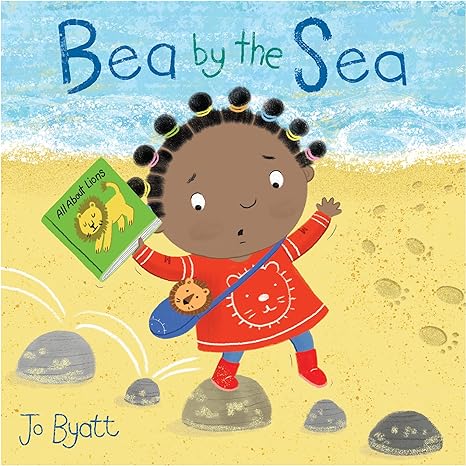
Bea hates the sand at the beach, but she loves lions. An imaginary lion helps her overcome her fears and feelings of discomfort so she can enjoy a beach day with her mom. Any child who has a setting or sensation they avoid because of how it makes them feel will appreciate this story!
Buy it: Bea by the Sea on Amazon
21. Mine! A Story of Not Sharing by Klara Persson
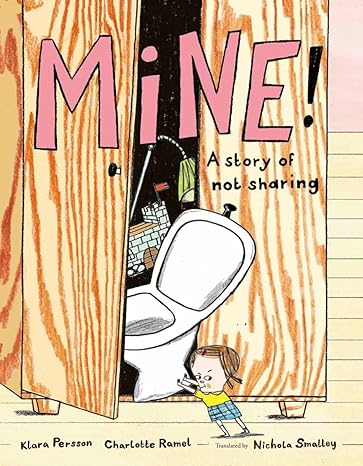
Add this to your preschool books about feelings related to sharing! Sharing is hard, especially when you have a friend over for a playdate. Sally takes her sharing woes to an extreme, shoving anything and everything she may have to share into the closet. It seems like a good plan, until everything in the closet is having way more fun than Sally.
Buy it: Mine! A Story of Not Sharing on Amazon
22. Ice Cream Face by Heidi Woodward Sheffield
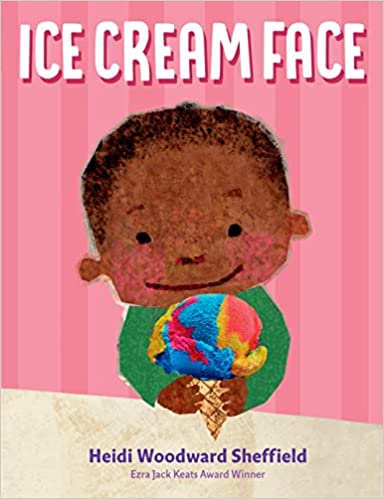
We can’t have enough preschool books about feelings. This one explores emotions through the best context: ice cream! Kids can easily imagine how it would feel to be waiting in line for ice cream, eating ice cream, even dropping ice cream. Lots of fun follow-up project possibilities too!
Buy it: Ice Cream Face on Amazon
23. First Feelings Series by Child’s Play and Paula Bowles
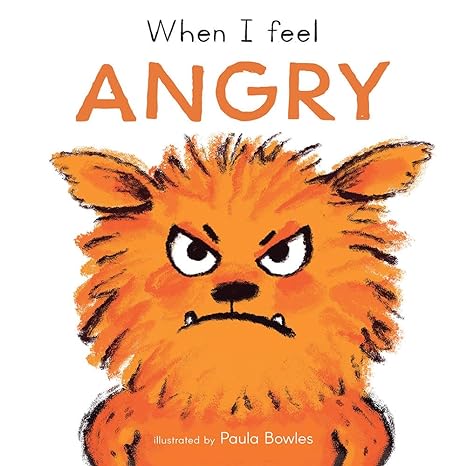
These oversize board books are perfect for sharing with a small group of young preschoolers as they build their emotional vocabulary. The simple text talks about when you might feel angry (or surprised, loved, sad, scared, etc.). The illustrations show furry and cute monsters in situations that will be easy for kids to recognize and talk about.
Buy it: When I Feel Angry on Amazon
24. Ups and Downs: A Book of Emotions by Mike Wohnoutka
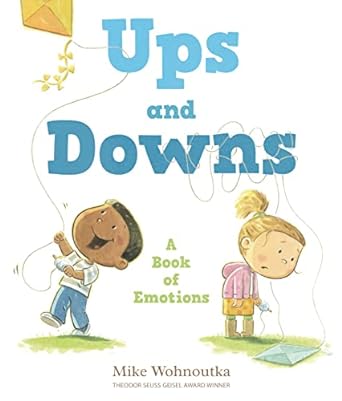
One feeling word per page shows how a child’s emotions can change so many times over the course of a regular day. With words like “delighted,” “disgusted,” and “relaxed,” this is a great title for kids who are ready to learn more feelings-related vocabulary words beyond the usual “happy,” “sad, and “mad.”
Buy it: Ups and Downs: A Book of Emotions on Amazon
25. Big, Big Feelings by Perry Emerson
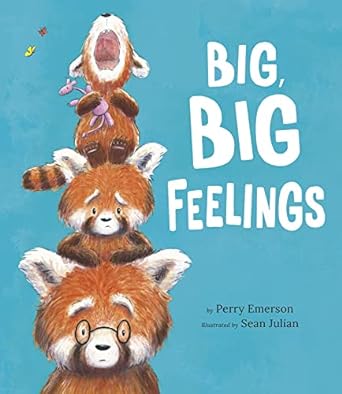
It can be so frustrating to have a little sister who has big meltdowns. Her big brother helps her learn to use words to talk about her big feelings. This is a sweet opener for discussions about using words for feelings in pre-K.
Buy it: Big, Big Feelings on Amazon
26. Pocket Full of Sads by Brad Davidson
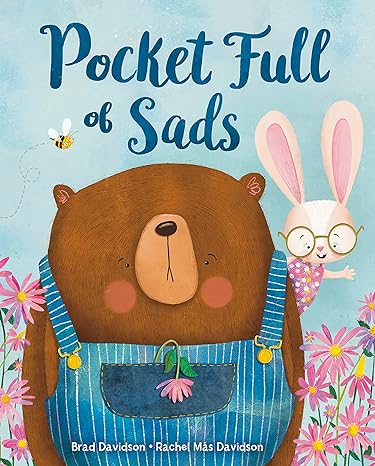
Sometimes sad feelings need to just be. Rabbit goes to great lengths to fix Bear’s sadness, but it turns out what Bear really needs is a chance to sit together quietly with a good friend. Great for opening conversations about ways to help sad friends at school.
Buy it: Pocket Full of Sads on Amazon
27. Out of a Jar by Deborah Marcero

This remarkable sequel to In a Jar shares how Llewellyn doesn’t like to experience his feelings so he puts them in jars. But what happens when it becomes too much to keep them closed up tight? Perfect for opening discussions with pre-K kids about naming and honoring different emotions.
Buy it: Out of a Jar on Amazon
28. Invisible Things by Andy J. Pizza and Sophie Miller
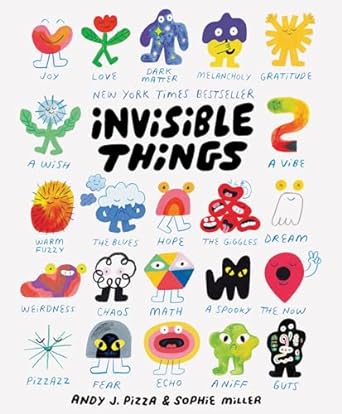
Get ready for mind-blowing preschool conversations. This title is like climbing into a kid’s head and giving them words for all the sensations, feelings, and experiences that make up their days. It’s an awesome way to connect conversations about the five senses with emotional vocabulary.
Buy it: Invisible Things on Amazon
Preschool Books About Family
Celebrate all kinds of families with these affirming, diverse preschool books.
29. Mama and Mommy and Me in the Middle by Nina LaCour
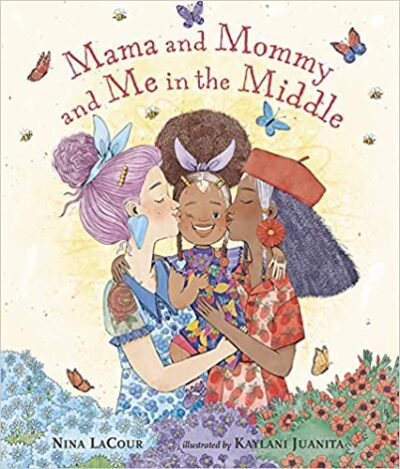
Family stories are staple preschool books. When Mommy goes away for the week, a little girl and her Mama make their own fun. Then they are happy to be reunited when Mommy returns.
Buy it: Mama and Mommy and Me in the Middle on Amazon
30. Love Makes a Family by Sophie Beer
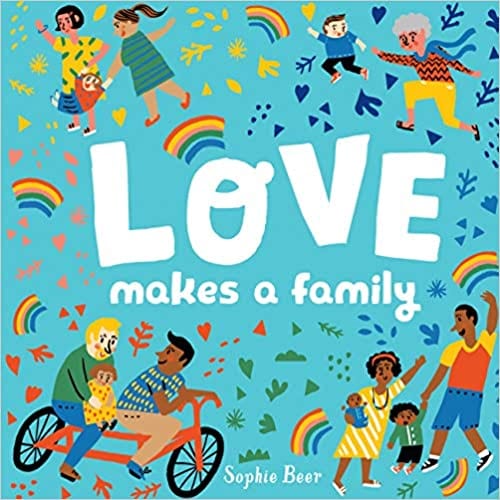
Most preschool classrooms engage in some kind of study of families, and this book is a must-have to encourage an inclusive view on the topic. Illustrations are colorful and engaging and sweetly portray many different variations on family structure.
Buy it: Love Makes a Family on Amazon
31. Mommy’s Khimar by Jamilah Thompkins-Bigelow

This feel-good story tells of a little girl who plays dress-up with her mother’s headscarves. We love sharing it when talking about families or when conversations about head coverings arise among students.
Buy it: Mommy’s Khimar on Amazon
32. I Really Want To See You, Grandma by Taro Gomi
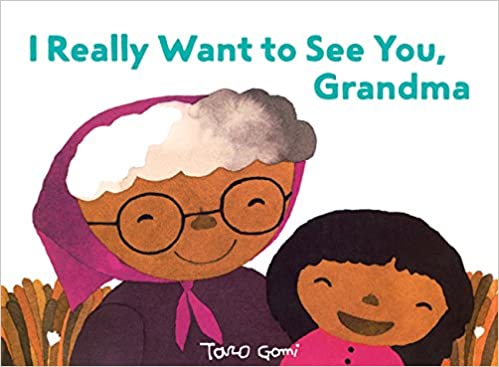
This story is for every kid who fiercely misses a special relative. Yumi desperately wants to see her grandma, so she sets out for her house. What she doesn’t know is that Grandma has also decided to make a visit, causing some frantic back-and-forth.
Buy it: I Really Want To See You, Grandma on Amazon
33. Kitten and the Night Watchman by John Sullivan
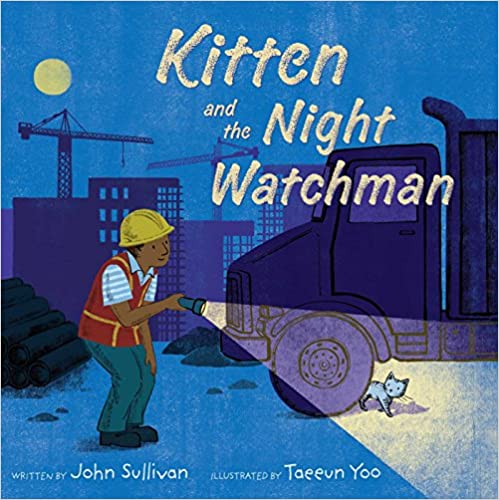
The dad in this touching story works night-shift security at a construction site. Its hushed descriptions of his rounds—complete with repeated sightings of a small, gray kitten—mesmerizes kids. The text is richly detailed without being too much for preschoolers, and we love the nod to families in which parents work varying schedules.
Buy it: Kitten and the Night Watchman on Amazon
34. Alphonse, There’s Mud on the Ceiling! by Daisy Hirst
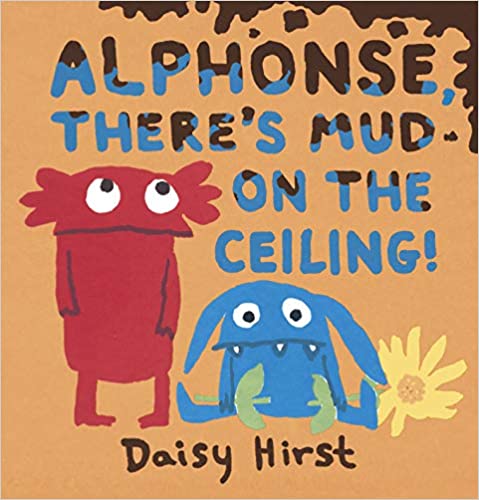
Monster sibs Natalie and Alphonse love playing outdoors but are frustrated to live in a tall apartment building. Creativity wins, though, and the story is full of their imaginative adventures both indoors and out. We like sharing a story about playing outside that also acknowledges the diversity of kids’ homes.
Buy it: Alphonse, There’s Mud on the Ceiling! on Amazon
35. Hurry Kate, or You’ll Be Late! by Janice N. Harrington
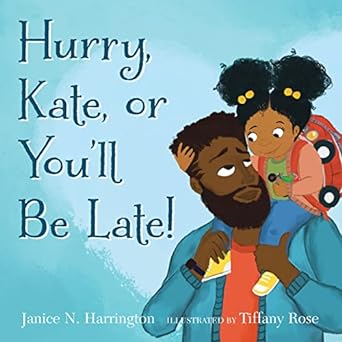
Kate and her dad have a special bond, as shown through all the sweet moments of their commute to preschool. None of them are the reason she’s late though; that’s due to the extra-long hug they share at the end! Perfect for opening conversations about what students and their caregivers love to see and do together.
Buy it: Hurry Kate, or You’ll Be Late! on Amazon
36. I’ll Always Come Back to You by Carmen Tafolla
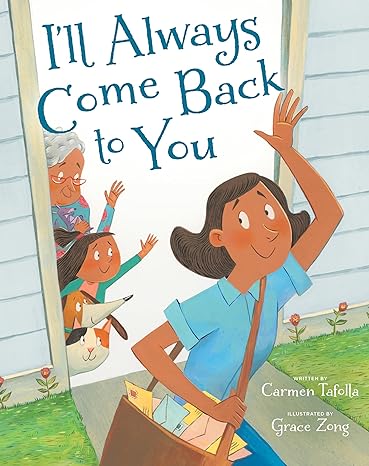
Navigating separation emotions is a critical part of preschool. This mom’s over-the-top reassurance will make preschoolers smile and feel confident that their own special adults will always come back.
Buy it: I’ll Always Come Back to You on Amazon
37. Raisin, the Littlest Cow by Miriam Busch
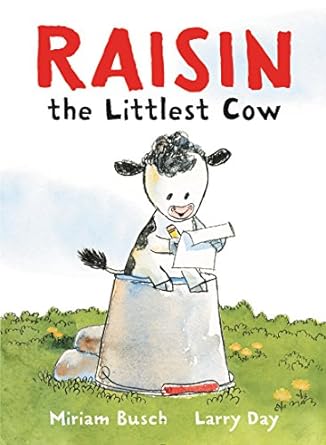
Raisin likes things just the way they are. When a new sibling comes along, it’s hard to adjust. We love this story for honoring the feelings of preschoolers who also may be adjusting to a new sibling. Raisin’s habit of making lists always seems to spark a flurry of prewriting activity among kids too!
Buy it: Raisin, the Littlest Cow on Amazon
Preschool Books About Seasons and Nature
Preschool is a time to build kids’ background knowledge and awareness of the world around them. These preschool books about weather and the environment can keep your class noticing, wondering, and learning across all seasons.
38. Berry Song by Michaela Goade
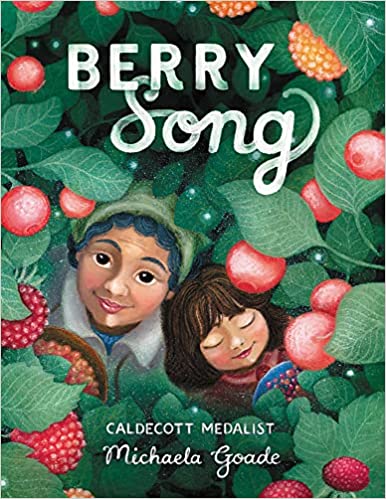
A young girl and her grandmother gather berries together and thank the earth, celebrating Tlingit traditions and the seasons. Definitely add this lovely, relatable book to your preschool books that represent indigenous cultures.
Buy it: Berry Song on Amazon
39. If You Find a Leaf by Aimee Sicuro
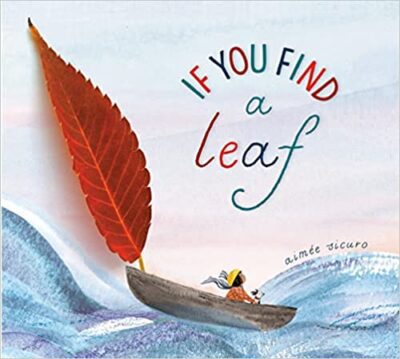
A girl finds a leaf and imagines all the different things it could be. Gorgeous illustrations are so fun to pore over with kids. Add this to your preschool books for inspiring fall projects!
Buy it: If You Find a Leaf on Amazon
40. A Very Big Fall by Emmy Kastner

Here’s one for every kid who’s every worried over an upcoming change—even those that are supposed to be exciting. When the squirrels really talk up the fall changes to come, the little leaves get uneasy, especially Maple. This would be such fun to act out with puppets or flannel board pieces!
Buy it: A Very Big Fall on Amazon
41. A Spoonful of Frogs by Casey Lyall
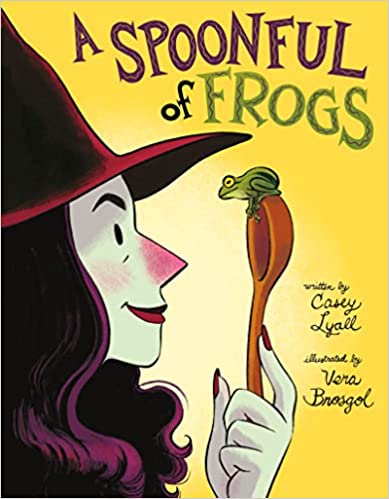
A witch heats up her cauldron for making a delicious soup with plenty of wholesome ingredients—and topped off with frogs. But she can’t keep the frog from jumping off the spoon! This is a hilarious read-aloud with fun pretend-play connections.
Buy it: A Spoonful of Frogs on Amazon
42. The Winter Bird by Kate Banks

A nightingale with a broken wing can’t fly south for the winter. Luckily, the kind winter forest animals help it adjust to the unfamiliar cold and snowy weather. This is one of our new favorite preschool books for talking about both seasonal changes and kindness toward others.
Buy it: The Winter Bird on Amazon
43. Being Frog by April Pulley Sayre
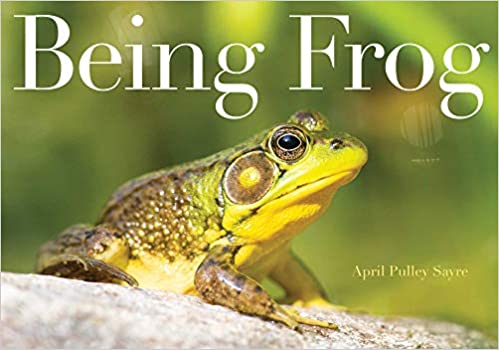
April Pulley Sayre’s photos are unparalleled for encouraging kiddos to study nature and observe like scientists. We love all her titles, but this one is particularly helpful for classrooms that study frog life cycles.
Buy it: Being Frog on Amazon
44. Green on Green by Dianne White
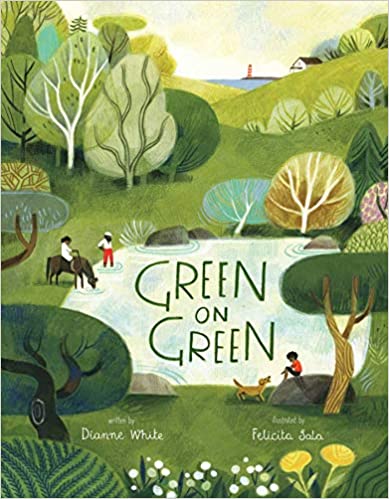
This delightful journey through the colors of the seasons is particularly nice to share if you have a child in your class who’s expecting a sibling. The mother in the book subtly grows with each change in season, and by year’s end, the family celebrates a new arrival.
Buy it: Green on Green on Amazon
45. What’s the Weather? by Shelley Rotner
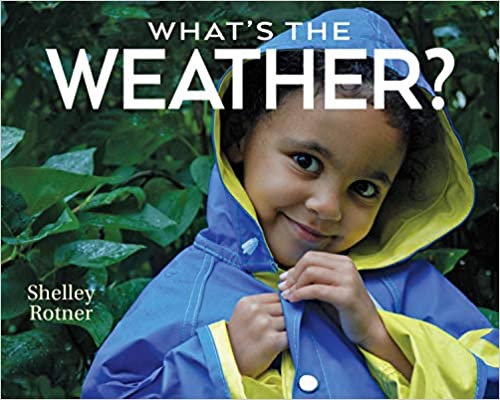
Since we love every single one of Shelley Rotner’s gorgeous photo essays, it was hard to choose one to feature, but this title is particularly interactive for classrooms having conversations about the weather.
Buy it: What’s the Weather? on Amazon
46. Whose Egg Is THAT? by Darrin Lunde
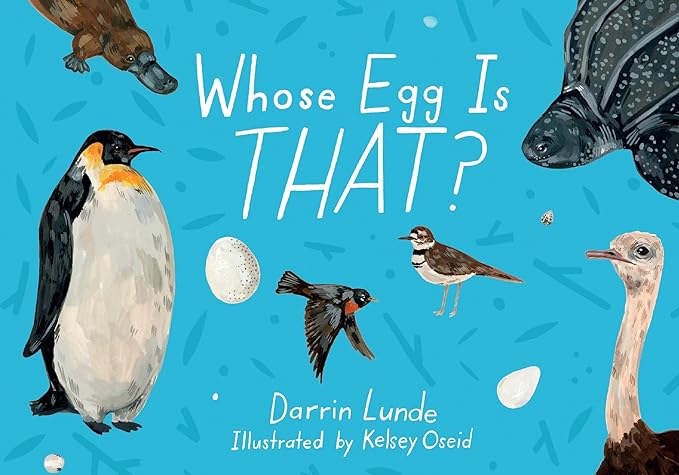
The Whose Is THAT? series is ideal for preschool naturalists. The predictable question-and-answer format is so read-aloud-friendly, and the amount of information is just right. We love how this title builds kids’ descriptive vocabulary too.
Buy it: Whose Egg is THAT? on Amazon
47. Whose Prints? by Kari Allen
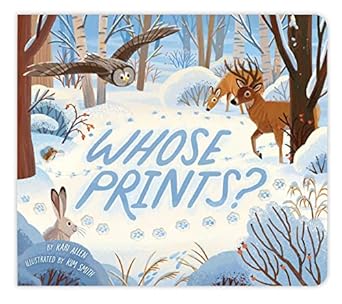
This board book is a must-have if it snows in your climate. Join in with a family’s snowy nature walk adventure to notice and describe all the tracks animals have left. Then head outside to spot tracks for real!
Buy it: Whose Prints? on Amazon
48. Zander Stays by Maureen Fergus
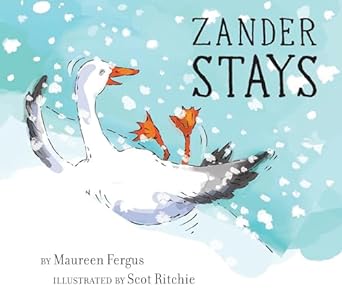
If you study winter animal adaptations, you’ll love sharing this book. Zander the goose decides he doesn’t want to fly south for winter this year. He explores different ways animals stay warm in wintry climates until he finds one that works for him!
Buy it: Zander Stays on Amazon
49. How To Say Hello to a Worm: A First Guide to Outside by Kari Percival
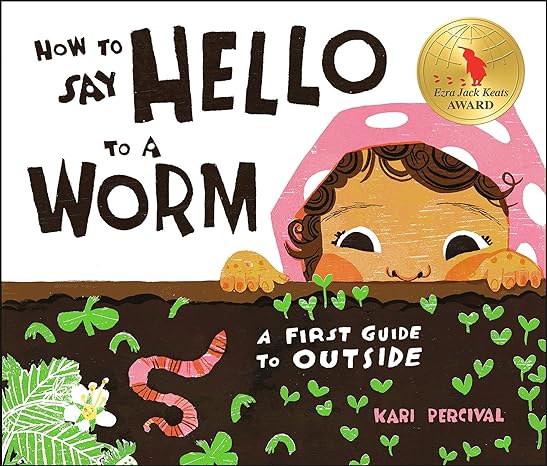
This delightful how-to book invites kids to get up close and personal with all the delights of nature, including, of course, wiggling worms! Perfect for sharing to prepare for a nature walk or outdoor learning time.
Buy it How To Say Hello to a Worm: A First Guide to Outside on Amazon
50. I’m Going To Build a Snowman by Jashar Awan
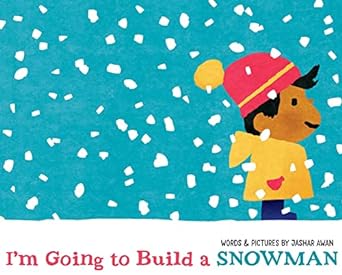
It’s a preschool classic conundrum: You want to build something and your materials aren’t quite right. In this case, it’s slushy, wet snow that just won’t turn into a snowman. This is the perfect title for working on sequencing. Plus, talk all about ways to manage frustration.
Buy it: I’m Going To Build a Snowman on Amazon
Preschool Books About Numbers, Letters, and Colors
Developing kids’ early learning concepts is a key piece of preschool, and fun books make the job easier! These preschool counting books, alphabet books, and color books are some of our recent faves to add to your collection.
51. & 52. Baby Bear Counts One and Baby Bear Sees Blue by Ashley Wolff
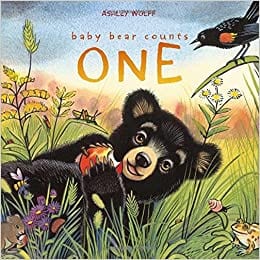
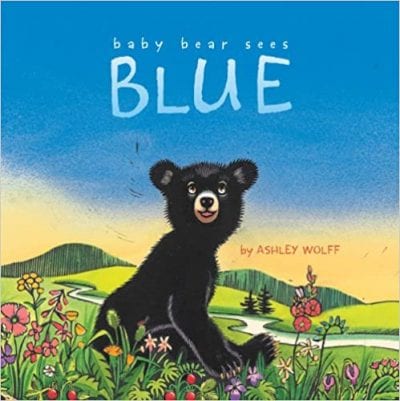
There are plenty of sweet bear stories, but it’s the gorgeous linocut illustrations that really make these concept books stand out. They build children’s vocabulary and content knowledge about a bear’s habitat too.
Buy it: Baby Bear Counts One and Baby Bear Sees Blue on Amazon
53. Mrs. Peanuckle’s Alphabet Series by Mrs. Peanuckle

Everything about this series is downright adorable. Each book marches through a nature-themed version of the ABCs with engaging facts about bugs, birds, veggies, fruits, trees, flowers, and more—all while using cheerful mixed-media art.
Buy it: Mrs. Peanuckle’s Alphabet series on Amazon
54. Bear Is Awake! An Alphabet Story by Hannah E. Harrison
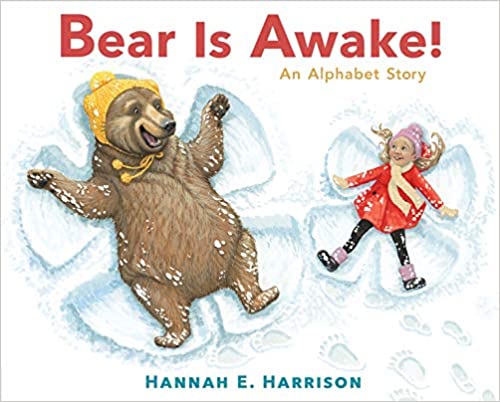
We love preschool books that combine the alphabet with a great picture story. Hearing kids’ reactions as the narrative about a hungry bear unfolds is a treat. A is for “awake” …
Buy it: Bear Is Awake! An Alphabet Story on Amazon
55. The Peas Series by Keith Baker
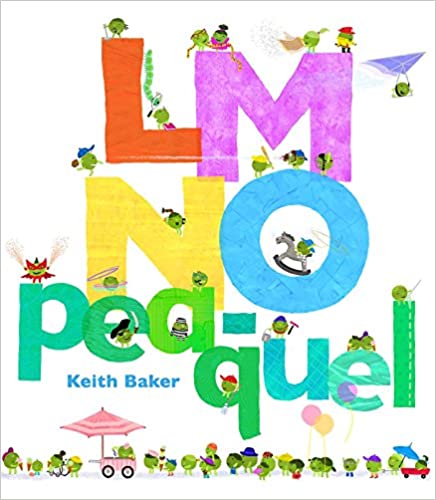
The original title in this series, LMNO Peas, is a longtime preschool book favorite because it combines two preschool loves: the alphabet and exploration of occupations. (Plus, could those little peas be any cuter?) We love having the latest installment, LMNO Pea-Quel, on hand for our pre-K kiddos as they start to tune in to lowercase letters, which are highlighted in this book.
Buy it: The Peas Series on Amazon
56. Every Color Soup by Jorey Hurley
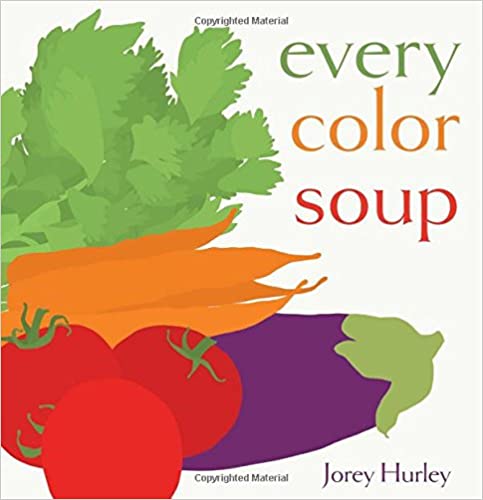
Elegant in its simplicity, this title features a single-color word matched to a soup veggie on each page. We love pairing it with a paint-color exploration, painting full sheets of paper, and chopping them up into “soup” pieces.
Buy it: Every Color Soup on Amazon
57. Pete the Cat and the Perfect Pizza Party by Kimberly and James Dean

Obviously, Pete the Cat is a preschool classroom’s best friend. We love this new fave—next to our all-time #1 Pete the Cat: I Love My White Shoes, of course—for talking all things pizza and all things starting with the letter P. Preschoolers giggle endlessly over Pete’s pals’ silly topping choices.
Buy it: Pete the Cat and the Perfect Pizza Party on Amazon
58. What About X? An Alphabet Adventure by Anne Marie Houppert
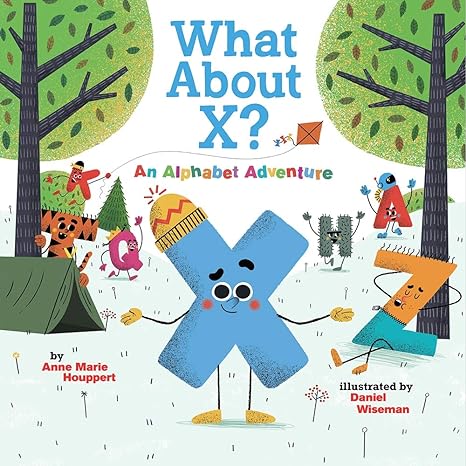
As the letters prepare for a camping trip, X can’t figure out what to bring. Everyone else has something fun that starts with their letter. Preschoolers will love the creative problem-solving in this book. Also add this to your preschool books for when you set up your pretend play area with a camping theme!
Buy it: What About X? An Alphabet Adventure on Amazon
59. Again, Essie? (Storytelling Math) by Jenny Lacika
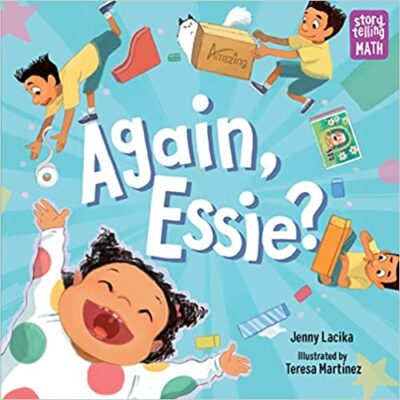
Big brother Rafael wants to protect his toys from his toddler sister, Essie. He fits together boxes and other found materials to make a wall. Will it work? Explore vocabulary like “tall,” “skinny,” “wide,” and more. We think every preschool classroom should have a full set of the Storytelling Math series books because they are so good. Many are also available in Spanish, and each one includes “Exploring the Math” activity ideas.
Buy it: Again, Essie? on Amazon
60. A Beautiful House for Birds (Storytelling Math) by Grace Lin
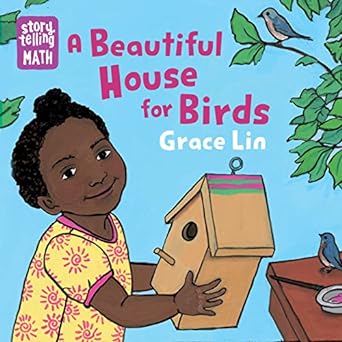
The Storytelling Math board books are ideal for setting out at your preschool math centers. We love them all, but this one about painting pattern and—oops!—making a mistake and coming up with a new plan will especially resonate with preschool students.
Buy it: A Beautiful House for Birds (Storytelling Math) on Amazon
61. Five Hiding Ostriches by Barbara Barbieri McGrath
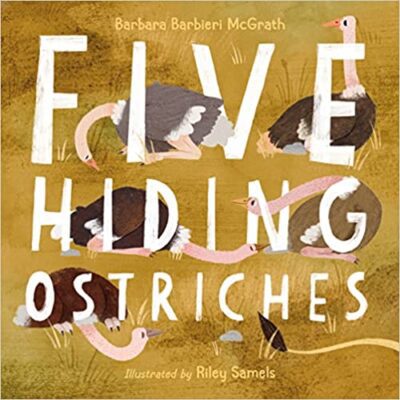
Five little ostriches wonder what to do when they spot a lion. This adorable spin on “Five Little Pumpkins” is such fun to read aloud and act out as a class.
Buy it: Five Hiding Ostriches on Amazon
62. Circle Under Berry by Carter Higgins
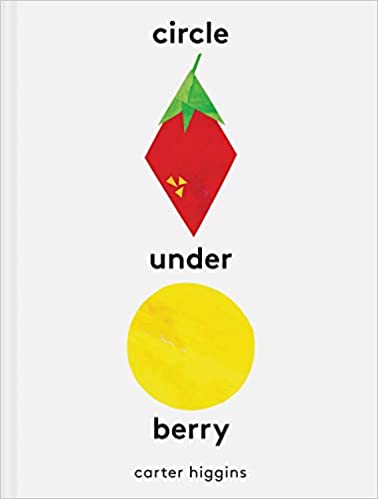
Explore shapes, colors, and prepositions with this most inventive of preschool books that’ll really get your class talking. It starts out simple but ramps up as the book goes on, making it a great multi-age concept book. Extension ideas abound, from offering it with loose parts for kids to explore or creating your own class version with cut and glued shapes.
Buy it: Circle Under Berry on Amazon
63. How To Count to 1 (and Don’t Even THINK About Bigger Numbers!) by Caspar Salmon

This clever counting book will tickle preschool funny bones as they catch all the jokes in the illustrations. Perfect for kids starting to be interested in “bigger numbers”!
Buy it: How to Count to 1 (and Don’t Even THINK About Bigger Numbers!) on Amazon
Preschool Books About Music, Sounds, and Movement
64. Everybody in the Red Brick Building by Anne Wynter
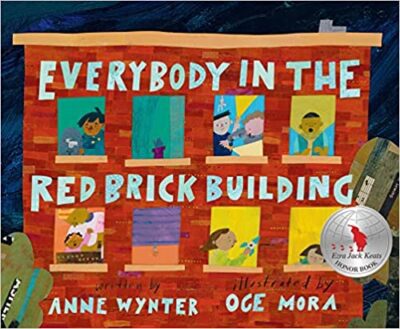
Preschool books with fun sounds make great read-alouds. Late at night, a series of noises wakes up everyone in an apartment building one by one. What will lull them back to sleep? Illustrations by one of our favorites, Oge Mora, make this book sing.
Buy it: Everybody in the Red Brick Building on Amazon
65. Listen by Gabi Snyder
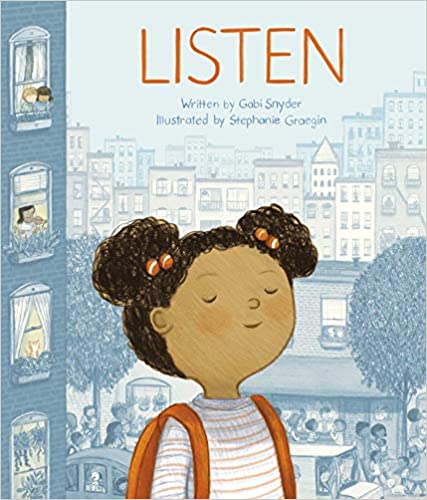
We love preschool books that encourage mindfulness and wonder, and this does both. A girl practices listening to the myriad small sounds around her, naturally encouraging preschool students to do the same.
Buy it: Listen on Amazon
66. & 67. Alphabreaths: The ABCs of Mindful Breathing and Alphabreaths Too: More ABCs of Mindful Breathing by Christopher Willard and Daniel Rechtschaffen
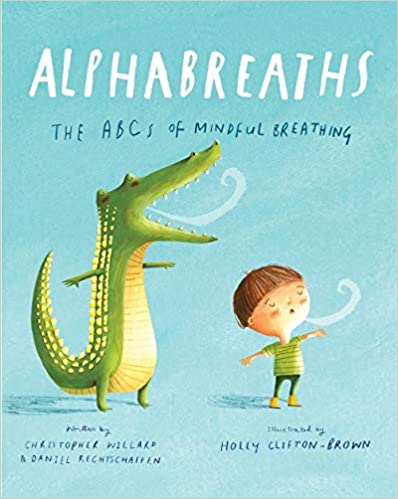
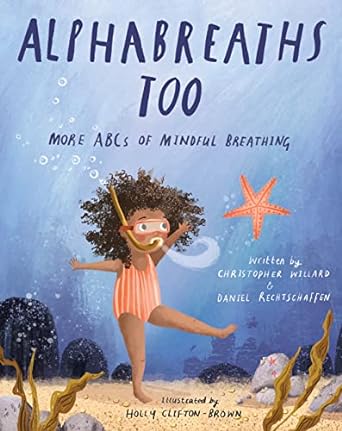
These invaluable titles are circle-time staples. Learn a different breath for every letter of the alphabet—and then learn another! Preschool kids think these are so fun, and they can call upon them when they’re upset or need to calm down.
Buy it: Alphabreaths: The ABCs of Mindful Breathing and Alphabreaths Too: More ABCs of Mindful Breathing on Amazon
68. & 69. Good Morning Yoga and Good Night Yoga by Mariam Gates
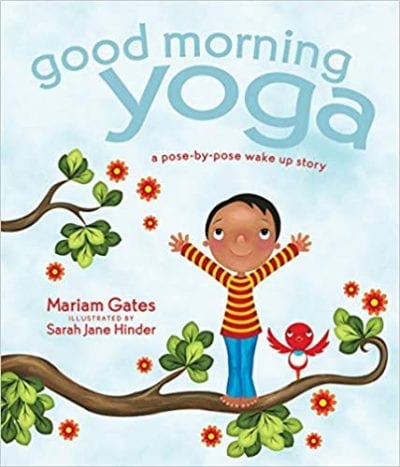

Yoga story time is one of our favorite ways to incorporate yoga in the preschool classroom, and these are two of our go-tos for energizing or winding down our littlest yogis.
Buy it: Good Morning Yoga and Good Night Yoga on Amazon
70. Natsumi! by Susan Lendroth
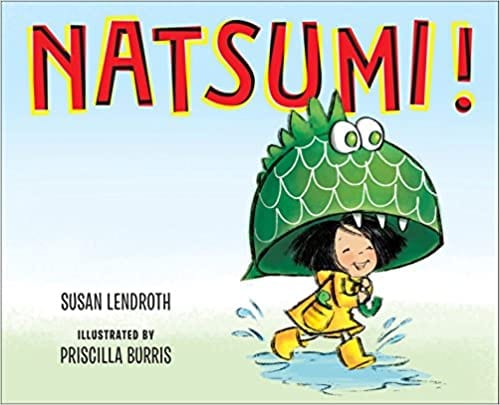
Natsumi has tons of energy, just like many preschoolers we know. Her grandfather helps her channel it into the perfect pastime: drumming! We like to pair this book with … you guessed it: plenty of percussion invitations.
Buy it: Natsumi! on Amazon
71. Animals Move by Jane Whittingham
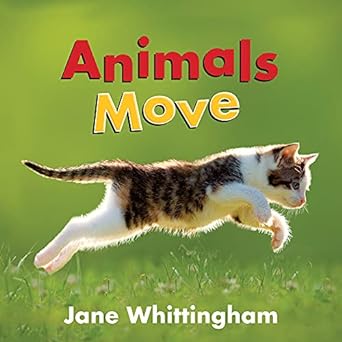
Teach your younger preschoolers about animals and interesting verbs with a ready-made movement session. Invite kids to try out pouncing, hopping, dashing, and lots more. Photographs of both animals and kids moving bring the concepts to life.
Buy it: Animals Move on Amazon
72. Can You Dance Like a Peacock? by Rekha S. Rajan
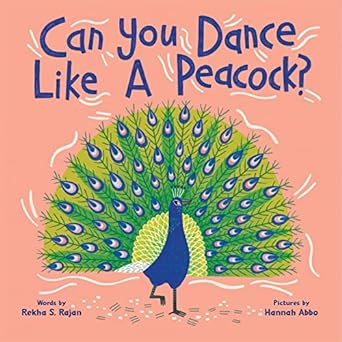
Fun and engaging nonfiction facts about animals who “dance” build kids’ background knowledge. Use the “Dance Break!” sections to get your class moving.
Buy it: Can You Dance Like a Peacock? on Amazon
73. Ear Worm! by Jo Knowles
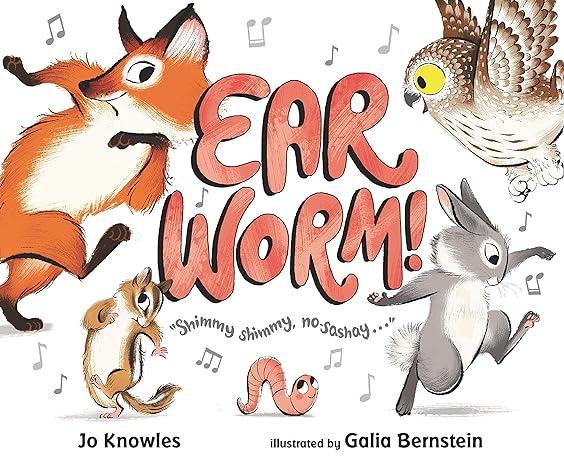
Get ready for the catchiest book ever. Little Worm has a song stuck in his head that he can’t quite place. As he tries to figure it out, it turns out his friends have their own ear worms too! Such fun to read aloud.
Buy it: Ear Worm! on Amazon
More Best Books for Preschool
Just because they don’t fit into a category doesn’t mean they aren’t shelf-worthy! These recent favorites are perfect for reading aloud, browsing, and making connections to curriculum topics.
74. House: First Words Board Books by Michael Slack
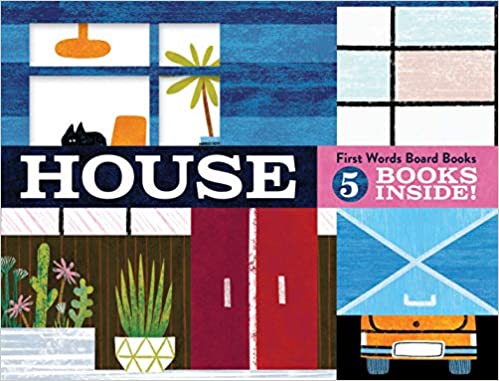
We’ve used this collection of little label books—each features contents of a room in a home—in so many ways. Share them to get kids talking about their own homes or as examples to inspire kids’ own label books. The little books fit into the box like a puzzle, so they make for a great item for independent exploration during quiet time too.
Buy it: House: First Words Board Books on Amazon
75. Wheels by Sally Sutton
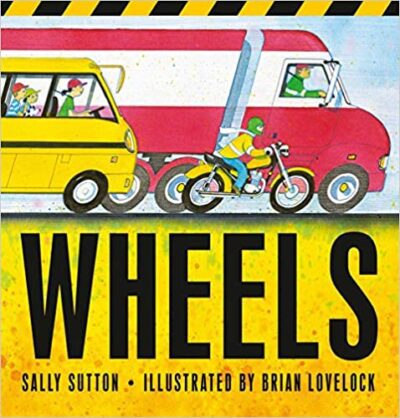
Sally Sutton earned a special place in our construction book-loving hearts with Roadwork. This more recent title has a guessing-game structure, which makes it perfect for reading aloud to kids who love vehicles.
Buy it: Wheels on Amazon
76. Penguin Bedtime Classics illustrated by Carly Gledhill
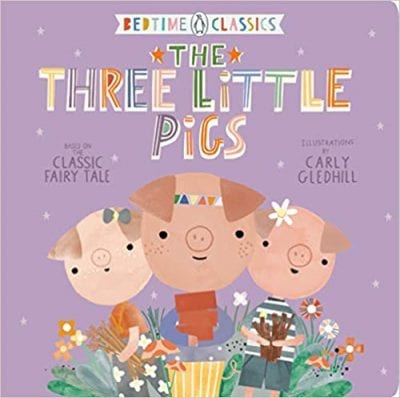
These are not your typical fairy tales! This board book collection distills classic tales down to a few basic—but still engaging—short sentences and fills in the gaps with diverse, fresh-feeling illustrations.
Buy it: Penguin Bedtime Classics on Amazon
77. The Three Bears and Goldilocks by Bee Waeland
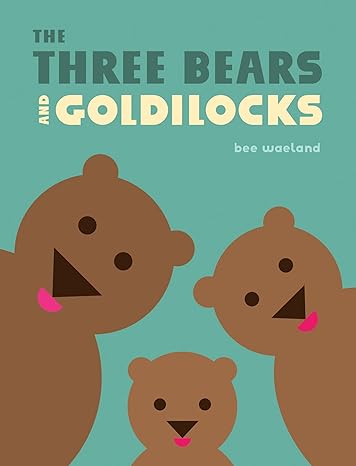
This wordless retelling of a classic fairy tale is perfect for sharing with kids once they are familiar with the story. They can use the fun illustrations to tell it themselves. We hope this creator will make more wordless fairy tale books!
Buy it: The Three Bears and Goldilocks on Amazon
78. The Princess and the (Greedy ) Pea by Leigh Hodgkinson

This rhyming riff combines the fun of a classic fairy tale with the “There Was an Old Lady Who Swallowed a Fly” song. A green pea swallows a full menu of dinner items. This is such fun to share alongside a traditional version of the fairy tale and exposes kids to fabulous vocabulary.
Buy it: The Princess and the (Greedy) Pea on Amazon
79. The Perfect Plan by Leah Gilbert
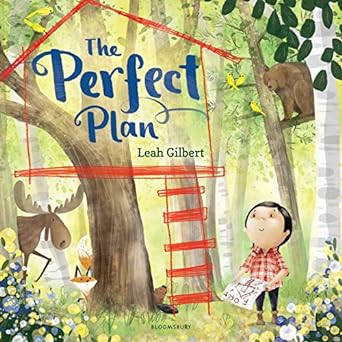
Maya has big dreams of building a perfect fort—too big, in fact, to accomplish alone. Luckily her forest friends help out and it’s more amazing than she could have imagined. This is sure to inspire kids’ own fort-building ideas.
Buy it: The Perfect Plan on Amazon
80. & 81. What Color Is Night? and What Sound Is Morning? by Grant Snider
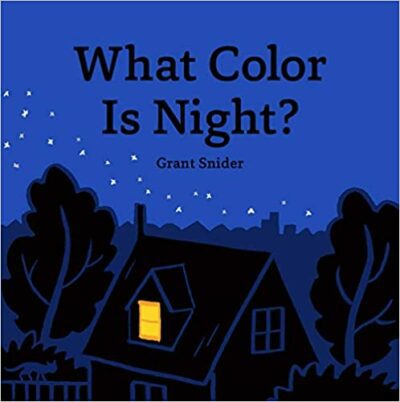
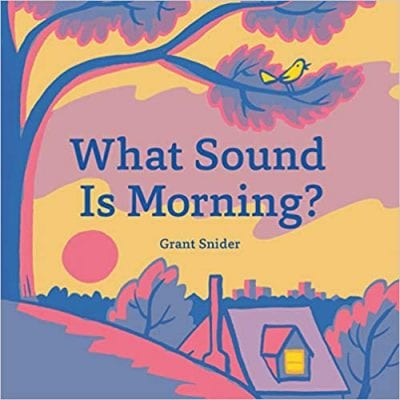
These poetic titles celebrate the nuanced colors of night and the sounds of the very beginning of the day. Bedtime and early mornings are preschooler prime times, of course, so these are highly relevant preschool books. They’re great springboards for activities about looking and listening carefully and describing colors and sounds in your school environment too.
Buy it: What Color Is Night? and What Sound Is Morning? on Amazon
82. Pizza Day by Melissa Iwai
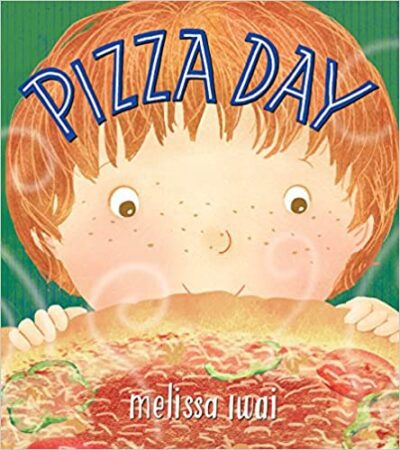
This realistic narrative about a family who makes pizza from scratch—think growing veggies and making homemade sauce—gives kiddos lots to talk about! After reading, it’s definitely time for some pizza-making of your own.
Buy it: Pizza Day on Amazon
83. Find Fergus by Mike Boldt
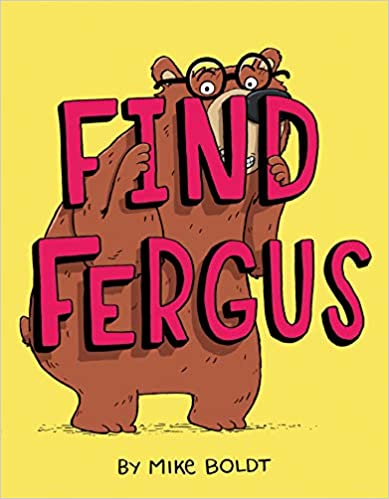
Kids just love this book! Part story about a bumbling bear, part seek-and-find challenge, it’s perfect for sharing with a small group. Fergus wants to hide, but he needs a lot of guidance, which of course, young hide-and-seek experts find hilarious. We love preschool books that encourage pre-writers too—this one’s good for inspiring some list-making!
Buy it: Find Fergus on Amazon
84. Boxitects by Kim Smith

This is our newest favorite spirited STEAM tale. First of all, the amazing made-up words: Boxitect. Blanketeer. Spaghetti-tect. Kids want to be all of them. There is a nice underlying message about the value of teamwork, and tons of cardboard-box creation inspiration too.
Buy it: Boxitects on Amazon
85. A Story for Small Bear by Alice McGinty and Richard Jones
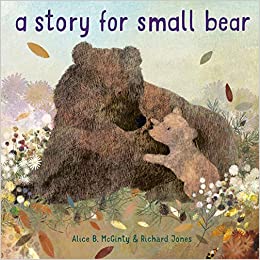
Small Bear is eager for her story time before settling in for winter’s sleep, but Mama tells her there’s preparation to be done first. Will they finish getting ready in time? This is hands-down one of the sweetest preschool books we’ve read recently and weaves in so many preschool curriculum topics—family relationships, seasons, forest animals—and, of course, the power of stories.
Buy it: A Story for Small Bear on Amazon
86. Ruby’s Sword by Jacqueline Véissid
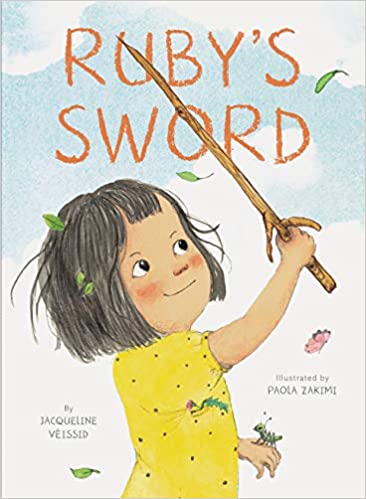
When preschoolers discover stick swords, our impulse can be to squash them in the name of safety. Imaginative Ruby shows us another path, though—one of ants rescued, apples procured, and fictional dragons challenged by a fearless knight, along with a satisfying, friendship-filled ending. Bookmark this for sharing each year when talking about using sticks in safe but fun ways.
Buy it: Ruby’s Sword on Amazon
87. Penguin series by Salina Yoon
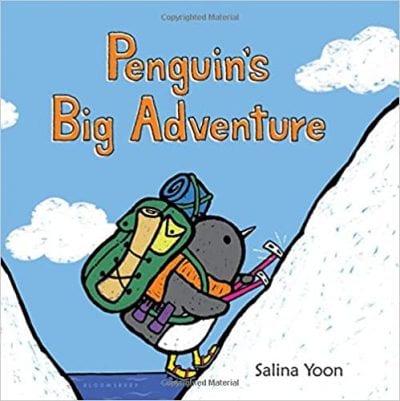
Penguin had our hearts back with Penguin and Pinecone, one of our favorite tales about the power of friendship that evokes amazing reflections from kids. In each subsequent story, Penguin sensitively grapples with a new social-emotional challenge, and we—and our penguin-loving preschoolers—are here for all of them.
Buy it: Penguin series on Amazon
88. & 89. Daniel Finds a Poem and Daniel’s Good Day by Micha Archer
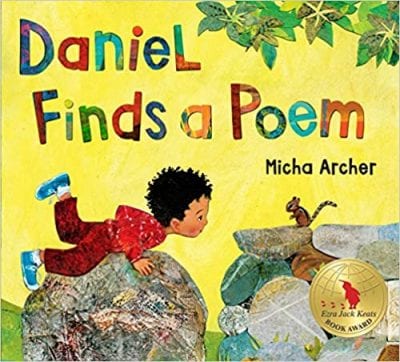
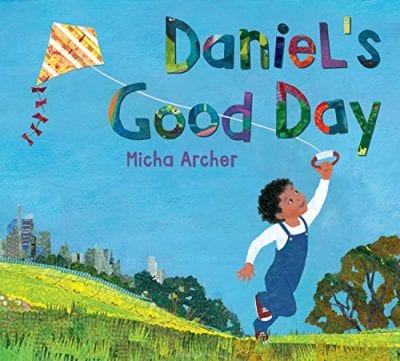
If you think poetry isn’t for preschoolers, think again. They dictate the most perfect poetic lines, and this pair of titles is the best springboard. Daniel is an honest, observant, caring delight of a character.
Buy it: Daniel Finds a Poem and Daniel’s Good Day on Amazon
90. Firefighter Flo! by Andrea Zimmerman
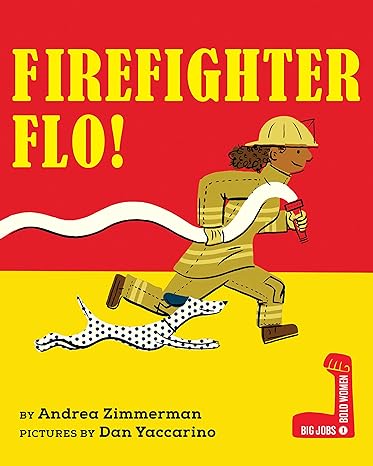
Brave firefighter Flo and her crew must hurry to save a dog caught in the blaze. Prepare to read this energetic gem aloud over and over again. It’s full of all the classic firefighting details and has fun sounds that little listeners can chime in to add too.
Buy it: Firefighter Flo! on Amazon
91. Lift, Mix, Fling! Machines Can Do Anything by Lola M. Schaefer

Add this to your preschool books to inspire kiddos who love all things mechanical. From axles to inclined planes and many more, this awesome rhyming introduction to simple and complex machines can lead into so many hands-on STEM explorations.
Buy it: Lift, Mix, Fling! Machines Can Do Anything on Amazon
92. Gus’s Garage by Leo Timmers
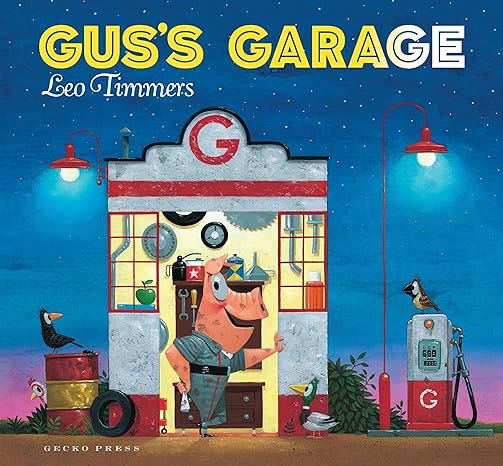
This quirky, creative rhyming story just gets better each time you read it and notice a new detail. Animals visit Gus’s Garage with unusual vehicle problems, and he’s always able to use his “bits and bobs” to craft a solution. This is the perfect STEM tale for inspiring creations made with recycled materials.
Buy it: Gus’s Garage on Amazon
93. Rainbow Stew by Cathryn Falwell
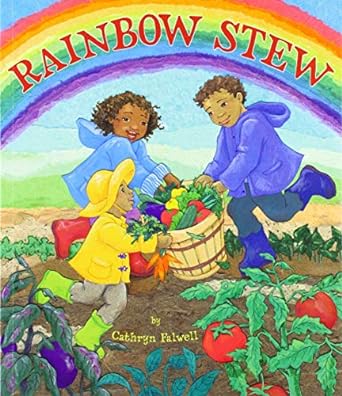
When a trio of siblings visits Grandpa, they’re so disappointed when it rains. Grandpa knows how to make it fun, though. He sends them out to the garden to pick veggies for his famous rainbow stew! This classic story includes so many key preschool themes, from managing disappointment to teamwork to plants.
Buy it: Rainbow Stew on Amazon
94. Have You Seen My Invisible Dinosaur? by Helen Yoon
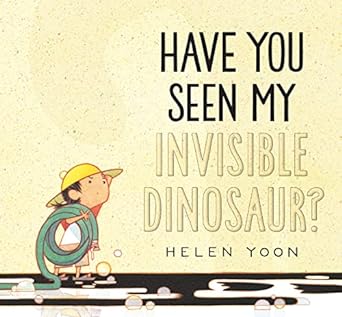
A child is looking for their pet dinosaur, who disappears after a bath. The trouble is, the dinosaur is invisible. When he’s clean, no one can see him! This is an imaginative read-aloud to get kids noticing the pictures and talking about the story.
Buy it: Have You Seen My Invisible Dinosaur? on Amazon
95. Don’t Wake the Dragon by Bianca Schulze
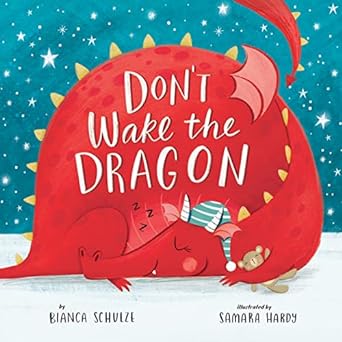
Add this to your preschool books with delightful vocabulary, perfect for sharing with eager listeners. The author asks kids to be very quiet, since she just put a “very rascally dragon” to bed. The interactive elements work well for a group, and this story could even be used as kids settle into their own rest time.
Buy it: Don’t Wake the Dragon on Amazon
96. The North Wind & the Sun by Philip Stead
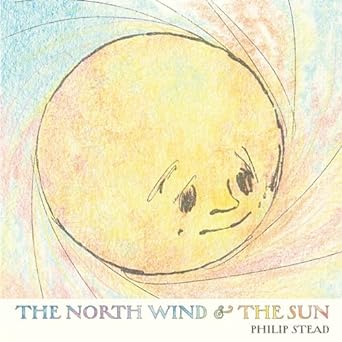
Once in a while, we like to stretch preschoolers’ thinking and vocabulary by sharing classic fables. This gorgeous retelling about joy vs. anger is perfect for repeated reading aloud and acting out with kid performers, puppets, or a flannel board.
Buy it: The North Wind & the Sun on Amazon
97. All Through the Night: Important Jobs That Get Done at Night by Polly Faber

As a family finishes up dinner, the mom heads to work. This informational text shares tons of examples of people who work at night, from store clerks to cleaners, musicians, newscasters, and many more. Add this to your preschool books about community helpers to help represent the diversity of careers and work schedules required in a community.
Buy it: All Through the Night: Important Jobs That Get Done at Night on Amazon
98. My Dog Just Speaks Spanish by Andrea Cáceres
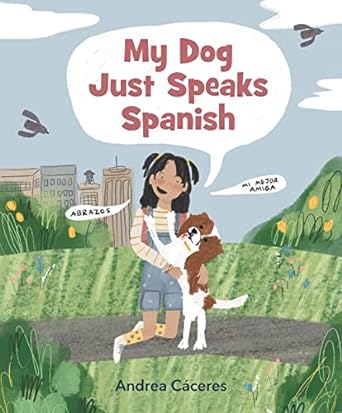
Aurora learned English when she moved to the United States, but her dog didn’t. This concrete explanation of what it means to speak one language and not another is perfect for helping preschoolers appreciate and empathize with those who speak languages different than theirs.
Buy it: My Dog Just Speaks Spanish on Amazon
99. The Midnight Babies by Isabel Greenberg
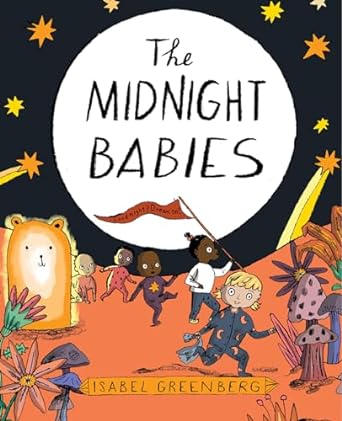
Determined to avoid sleep, the babies head out on a grand adventure. Can they manage to keep their eyes open? Preschoolers will love their funny antics.
Buy it: The Midnight Babies on Amazon
100. If I Was a Horse by Sophie Blackall

Sophie Blackall’s illustrations are unmatched. Unleash preschoolers’ imaginations as they consider what they’d do if they were horses.
Buy it: If I Was a Horse on Amazon
101. The Twist-a-Roo by Kathleen Doherty
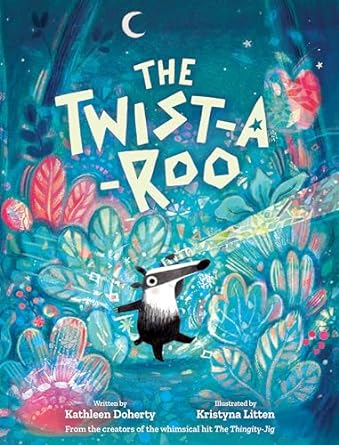
Badger’s supposed to be getting ready for winter, but when he finds a discarded “twist-a-roo”—actually a kaleidoscope—he can only think of looking at the beautiful patterns it makes. This is a fun “twist” on a winter animal story, with sweet friendship themes too. Be sure to have an actual kaleidoscope on hand for kids to try.
Buy it: The Twist-a-Roo on Amazon
Looking for more book recommendations? Be sure to subscribe to our newsletters so you can get our latest picks.
